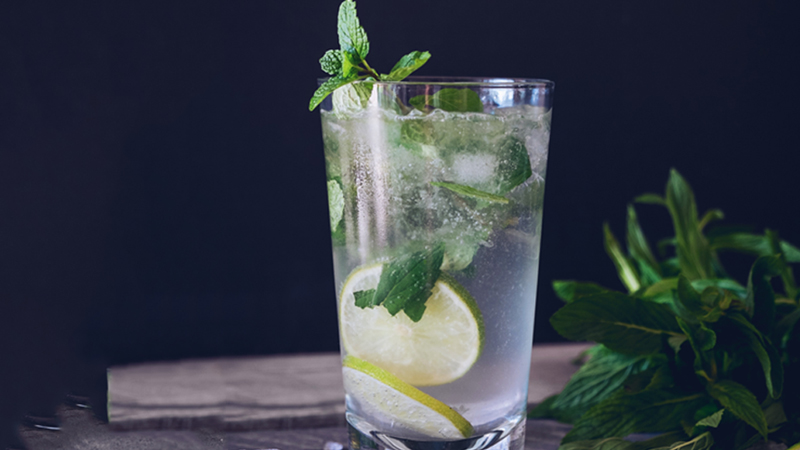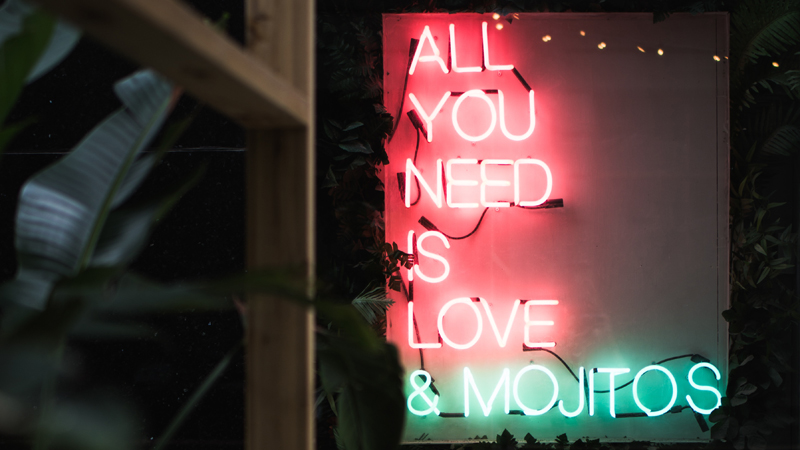It’s easy to botch Mojitos. Despite having four ingredients and breezy, tropical-island vibes, Mojitos require precision. In a drink with so few components, you’ll taste every off flavor, from subpar spirits to from-concentrate citrus.
Like their cousins, the Daiquiris, Mojitos are a combination of rum, lime juice, and a sweetener. Mojitos also involve fresh mint, an herb that seems hardy in the garden but goes from pleasantly muddled to limply lifeless in an instant. Making drinks with raw sugar also presents a challenge. If it isn’t properly dissolved, you’ll be crunching on crystals with every sip.
We spoke with five bartenders about their tips for making stellar Mojitos. From at-home hacks, to the one bartending technique you should never ever use, here are five dos and don’ts for mastering Mojitos.

What to Do When Making Mojitos
Juice Fresh Limes
Sure, it might seem fussy to juice a bunch of fruits instead of spiking your drink with a green plastic supermarket squeegee. But fresh lime juice is key.
“A Mojito is made and broken by the citrus that’s used,” Aren Bellando, lead bartender, SideDoor and Lawry’s the Prime Rib, Chicago, says. He swears by “fresh, unpasteurized lime juice.”
Freshly squeezed citrus doesn’t contain any of the additives or stabilizers found in bottled juices. Those extra ingredients will give your finished drink an unnatural, pre-packaged taste.
Cut the Sugar
The classic Mojito recipe calls for muddled sugar, but, if done incorrectly, results can be grainy. Bypass this problem by using simple syrup instead.
“There’s no reason to waste time to dissolve the granular sugar or risk a gritty drink when you can just use simple syrup,” Amanda Swanson, agave sommelier at Anejo in TriBeCa, NYC, says. She suggests making syrup with light sugar because dark brown or Turbinado sugar can “overpower your rum and discolor your drink.”
Use Rum You’d Drink Straight
“Using a flavorless rum only makes the drink taste like a boozy, mint soda,” David Mor, beverage manager, Cindy’s, Chicago, says. You don’t have to blow your budget on a top-shelf bottle, but you should use a rum you like the taste of straight. The sugar, citrus, and mint adorn the spirit in this drink, they don’t mask it.
Mojitos traditionally call for white rum, but you can certainly swap in dark, aged varieties. “I like to use a dark rum to add a little bit more flavor,” Kenneth McCoy, chief creative officer, Public House Collective, NYC, says. Whatever age statement or flavor profile you choose, remember that the spirit will be the most powerful flavor in your drink.

What to Avoid When Making Mojitos
Don’t Over-Muddle Your Mint
We asked five bar professionals for their Mojito-making tips, and all of them warned against over-muddling.
“You don’t want to turn the mint into mulch, you just want to extract the oils enough to get the minty aroma,” McCoy says.
There are several ways to do this. You can simply drop a few small mint leaves in your drink before you mix it, releasing their scent as you stir. Or you can lightly twist the mint leaves in your fingertips over the drink before stirring. “Simply agitate the mint a little to express the oils out of them and open up their aroma,” Mor says.
If you over-muddle, “you will release excess bitter-ing agents that will make your otherwise bright Mojito take a dark turn,” Swanson says. “Less can be more.”
Stirring > Shaking
Is it tempting to shake every drink you make dramatically in a stainless steel cocktail shaker, like you’re auditioning for a samba band or Tom Cruise’s role in “Cocktail”? Of course it is. But that won’t do your Mojito any good. Aggressively shaking your drink “could break up the mint,” Jonathan Borin, head bartender, The Fat Radish, NYC, says. The result is a gritty Mojito with muted flavors.
Instead of using a cocktail shaker, stir yours in its glass with a swizzle. It’s easy and elegant, and protects your delicate herbs.

